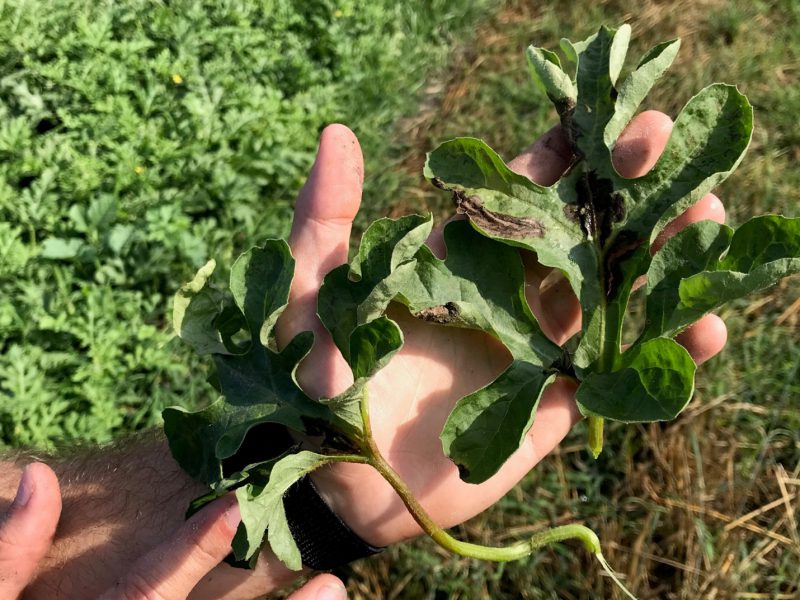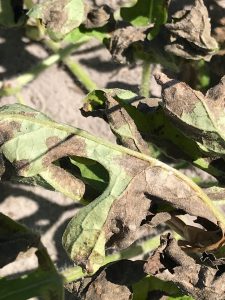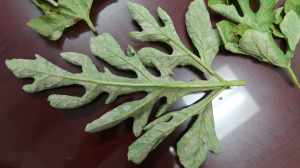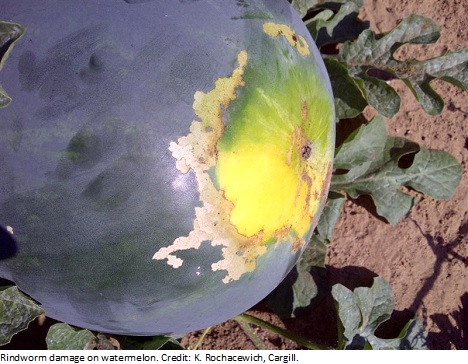Bob Hochmuth with input from Suwannee Valley Extension Agents: Mark Warren (Levy), Tyler Pittman (Gilchrist), Tatiana Sanchez (Alachua), Luke Harlow (Union), Jay Capasso (Columbia), Dan Fenneman (Madison), Keith Wynn (Hamilton), Danielle Sprague (Jefferson), Emily Beach (Lafayette), Amanda Phillips (Suwannee), Kevin Athearn (RSA-Agri- business), and Sudeep Sidhu (RSA- Water Resources).
Harvest Continues in Full Swing
From all of us in the allied watermelon industry, we wish you the best now that harvest has begun.
–
Disease Update
I must admit this week’s update is hard to put together, mainly because we have such a spread across the region as related to number of harvests (1-3) and clean versus disease fields etc. Our intent is to make sure everyone knows what is happening in the region, so you can make the best decision possible on your own farm. This week I will summarize what is important and what we are observing.
Gummy stem blight is by far the main widespread threat. Rains and harvesters in fields in the region will continue to provide great opportunity for spread. My observation is that recent sprays with Inspire Super have really helped slow down gummy, but it carries a 7-day Pre-harvest Interval (PHI). Your better option for gummy stem blight control in harvesting periods is Aprovia Top, which is very comparable to Inspire Super in terms of control and yet Aprovia Top carries a 0-day PHI.
–
Downy Mildew and Powdery Mildew are both present in the region but have not been widespread. Scout diligently for downy and powdery mildew. Consider how many more harvests you plan in a field and choose spray options accordingly. Fields that are relatively free of diseases may not need to be sprayed as you get to your final week, but assess each field for those choices (Bob Hochmuth)
–
Nutrient Management Update
Once harvests start, it is common to set the nitrogen (N) rate at 2.0 lbs per acre per day and leave it there until one week from last pick. It is not useful to fertigate that last week of harvest. (Bob Hochmuth)
–
Spider Mites
We continue to get scattered reports of spider mites. This pest is more common in dry weather, so in areas that have missed recent rains spider mites would not be a surprise. Unlike disease warnings, spider mite cases are very isolated and do not represent a call to action, other than to keep up a good scouting program and be on the lookout for small patches of bronzed leaves typical of spider mite feeding. It is common to see these infestations along the edges of the fields where the mites may have moved in from weedy borders. See pages 104-105 in your UF/IFAS Watermelon Field Guide. (Bob Hochmuth)

Left-spidermite damage. Right-close up of underside of a leaf with spidermites. Credit: Bob Hochmuth, UF/IFAS
–
Rindworms
Generally, we have not had reports of major outbreaks of rindworm damage. This may be a result of excellent spray programs over the past few months. Like many other parts of this update, you will likely not need to spray as you get to the final week if you are not seeing damage at that point. Scout, scout, scout! (Bob Hochmuth)
–
Silverleaf Whitefly
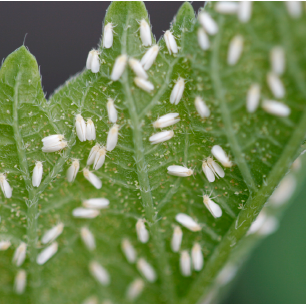 We normally begin to see a few silverleaf whiteflies in late May and that is the case this year. In fact, we may be getting more reports than normal this time of year, especially in the southern part of the Suwannee Valley. Keep an eye out and be aware silverleaf whiteflies can vector viruses that affect both the vegetative part of the plant and can also affect internal fruit quality. If this occurs, please let us (Extension Agents) know. (Bob Hochmuth)
We normally begin to see a few silverleaf whiteflies in late May and that is the case this year. In fact, we may be getting more reports than normal this time of year, especially in the southern part of the Suwannee Valley. Keep an eye out and be aware silverleaf whiteflies can vector viruses that affect both the vegetative part of the plant and can also affect internal fruit quality. If this occurs, please let us (Extension Agents) know. (Bob Hochmuth)
- 2024 Watermelon Season Wrap Up - June 21, 2024
- Weekly Watermelon Update – June 3 - June 7, 2024
- Weekly Watermelon Update #10 – May 20 - May 24, 2024

